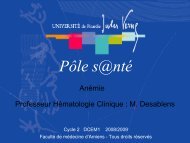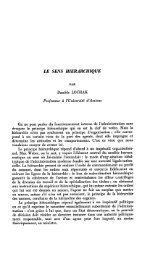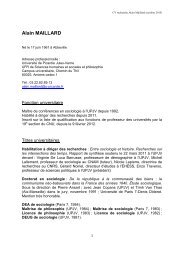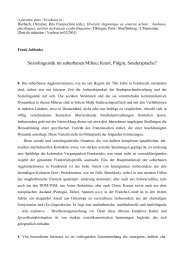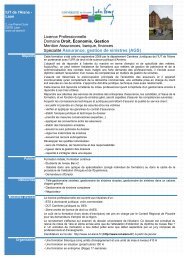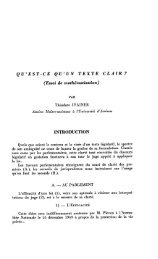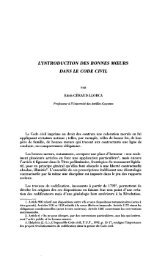Mirrors in the air: mirages in nature and in the laboratory
Mirrors in the air: mirages in nature and in the laboratory
Mirrors in the air: mirages in nature and in the laboratory
Create successful ePaper yourself
Turn your PDF publications into a flip-book with our unique Google optimized e-Paper software.
M Vollmer<br />
Figure 7. Typical <strong>in</strong>ferior mirage, observed on a hot summer street. Such <strong>mirages</strong> can be seen nearly every day<br />
while driv<strong>in</strong>g a car, when <strong>the</strong> Sun sh<strong>in</strong>es for a long time on paved streets. (Photo E Tränkle, reproduced with k<strong>in</strong>d<br />
permission.)<br />
Figure 8. Inferior mirage observed on <strong>the</strong> Wannsee <strong>in</strong> Berl<strong>in</strong>. The water had already warmed up <strong>in</strong> early spr<strong>in</strong>g<br />
before cold arctic <strong>air</strong> was rush<strong>in</strong>g <strong>in</strong>. As a result, a normal boat seems to look like a ‘sea daemon’. (Photo<br />
ETränkle, reproduced with k<strong>in</strong>d permission.)<br />
on hot summer days. The formation of <strong>in</strong>ferior<br />
<strong>mirages</strong> is illustrated <strong>in</strong> figure 6.<br />
Some examples from observations <strong>in</strong> everyday<br />
life <strong>and</strong> <strong>nature</strong> are shown <strong>in</strong> figures 7 <strong>and</strong> 8.<br />
The angular size of <strong>mirages</strong> is usually<br />
about 0.5 ◦ –1 ◦ . For observations, b<strong>in</strong>oculars <strong>and</strong><br />
cameras with telephoto lenses are used. The<br />
<strong>mirages</strong> are often distorted <strong>and</strong> flicker<strong>in</strong>g due<br />
to local density fluctuations <strong>in</strong> <strong>the</strong> <strong>air</strong>. This is<br />
very similar to <strong>the</strong> flicker<strong>in</strong>g of stars at night,<br />
seen through <strong>the</strong> atmosphere. Therefore, it<br />
is not possible to get really ‘focused’ mirage<br />
photographs.<br />
Invisible objects: <strong>the</strong> vanish<strong>in</strong>g l<strong>in</strong>e<br />
A prom<strong>in</strong>ent feature of a mirage is <strong>the</strong> so-called<br />
vanish<strong>in</strong>g l<strong>in</strong>e of <strong>the</strong> object [2]. Light below<br />
certa<strong>in</strong> object po<strong>in</strong>ts has no chance whatsoever of<br />
reach<strong>in</strong>g <strong>the</strong> eye of <strong>the</strong> observer, i.e. parts of <strong>the</strong><br />
object cannot be seen, irrespective of <strong>the</strong> direction<br />
<strong>in</strong>to which <strong>the</strong> light is scattered (see figure 9).<br />
The concept of vanish<strong>in</strong>g l<strong>in</strong>es expla<strong>in</strong>s why<br />
<strong>mirages</strong> often show <strong>in</strong>complete images of objects,<br />
which often makes it difficult to decide what is<br />
actually be<strong>in</strong>g observed. Figure 10 depicts two<br />
photographs taken close to <strong>the</strong> coast of <strong>the</strong> North<br />
Sea <strong>in</strong> Germany.<br />
168 P HYSICS E DUCATION March 2009



